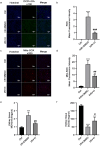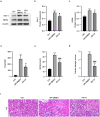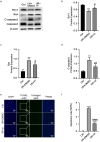Vitexin enhances mitophagy and improves renal ischemia-reperfusion injury by regulating the p38/MAPK pathway
- PMID: 39961687
- PMCID: PMC11834780
- DOI: 10.1080/0886022X.2025.2463572
Vitexin enhances mitophagy and improves renal ischemia-reperfusion injury by regulating the p38/MAPK pathway
Abstract
Vitexin (VI) is a naturally occurring flavonoid derived from the leaves and seeds of Vitex, recognized for its strong antioxidant properties. This study aims to explore its effects on renal ischemia-reperfusion injury (IRI) and investigate the underlying mechanisms. We utilized hypoxia-reoxygenation (H/R) models with HK-2 cell lines and renal ischemia-reperfusion (I/R) models in mice, applying vitexin preconditioning to assess its influence on renal IRI. Our findings reveal that vitexin mitigated oxidative stress, decreased cell apoptosis, and reduced the expression of renal damage indicators such as kidney injury molecule-1 (KIM-1) and neutrophil gelatinase-associated lipocalin (NGAL), along with an overall improvement in renal function. To further investigate the mechanism, we used network pharmacology and molecular docking techniques to predict potential vitexin targets in renal IRI. Results from Western blotting and immunofluorescence assays indicate that vitexin may promote mitophagy by suppressing the phosphorylation of the pivotal p38 protein in the p38/MAPK signaling pathway, offering protection against renal IRI. The findings indicate that vitexin could potentially be used as a therapeutic agent to alleviate renal IRI.
Keywords: Renal ischemia-reperfusion injury; mitophagy; network pharmacology; vitexin.
Conflict of interest statement
No potential conflict of interest was reported by the author(s).
Figures






References
MeSH terms
Substances
LinkOut - more resources
Full Text Sources
Other Literature Sources
Miscellaneous
